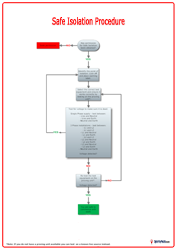Safe Isolation Procedure
What is Safe Isolation?
All electrical installations must be isolated and proven dead before work can commence.
Securely “disconnecting” (isolating) one or all parts of the installation from the live supply is called `Safe Isolation`.
There can be several ways of isolating an installation. Most common is by means of a Main Switch. If there is a need to isolate only one circuit at the time, then an MCB provides isolation. In domestic environment it is usually the main fuse that gets removed.
The Safe Isolation Procedure:
There are industry-wide recommendations on correct procedures in order to achieve safe isolation. The steps described bellow form the Safe Isolation procedure.
Before starting the Safe Isolation Procedure, remember to seek permission from a relevant responsible person, beacause there might be certain vital services that must not be interrupted at any time. There might be a permit to work system in place to which you will need to comply.
Step 1. Identify the point of isolation for the system or circuit. Lock off, place warning label and keep the key to the lock with yourself.
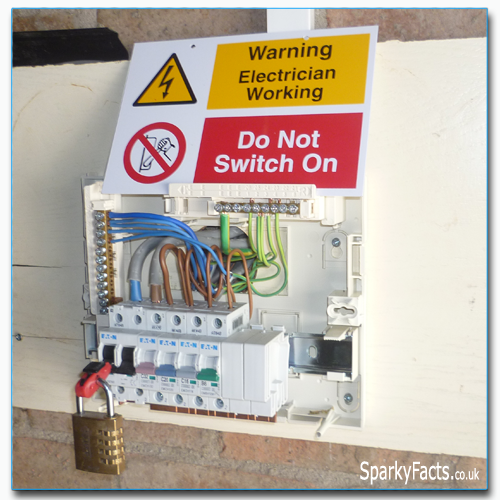
Step 2. Select the correct and mains approved test equipment and ensure that it works correctly by testing on the proving unit.
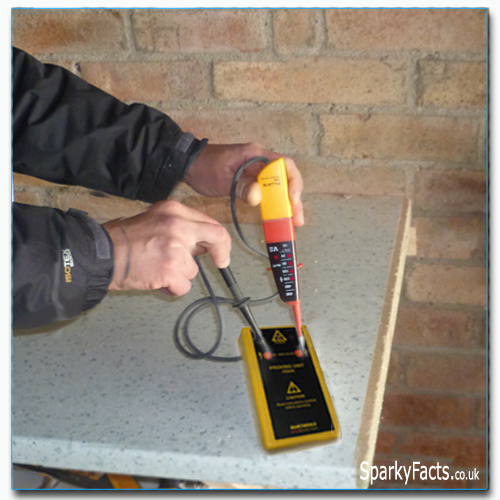
Step 3. Test the outgoing side of the means of isolation (Main Switch, MCB, Fuse, etc.) to make sure it is dead. Depending on the type of the supply you will need to complete the following tests:
Single Phase installations test to confirm that there is no voltage between:
- Line and Neutral
- Line and Earth
- Neutral and Earth.
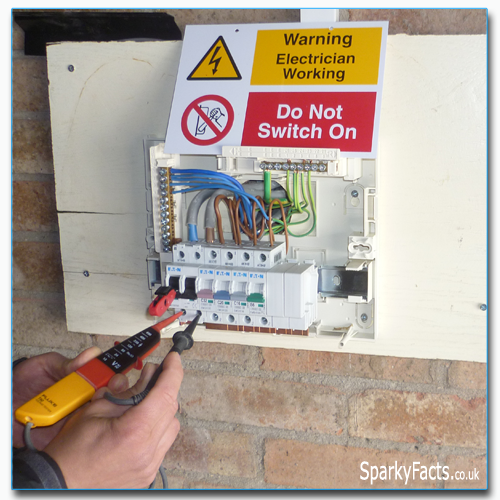

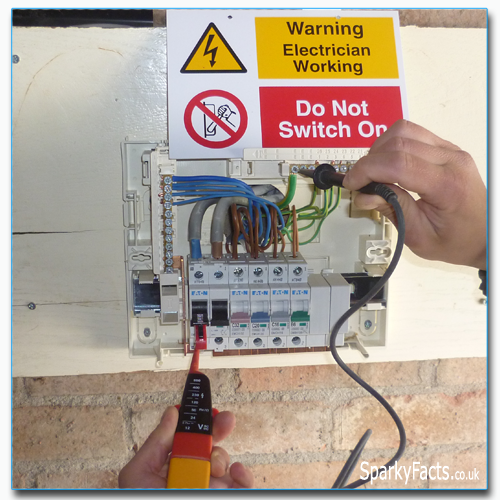
3 Phase installations test to confirm that there is no voltage between:
- L1 and L2
- L1 and L3
- L1 and Neutral
- L1 and Earth
- L2 and L3
- L2 and Neutral
- L2 and Earth
- L3 and Neutral
- L3 and Earth
- Neutral and Earth
Step 4. Re-test the test equipment on the proving unit.
Safe Isolation workflow diagram
The following workflow diagram on safe isolation is an excellent resource that should be part of every electrician's tool bag. It is designed to be downloaded and printed out to be of use to anyone:
Click on the image to open in A4 format or download it as a printable document.
The Safe Isolation kit
There are several different kits available on the market. You could go for a kit with the test instrument and the probing unit included or you could choose to get a basic one.
As long as you have a reliable test meter with a probing unit, it does not matter which make it is.
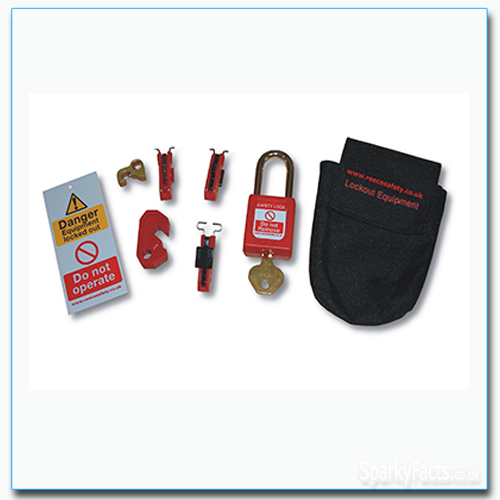
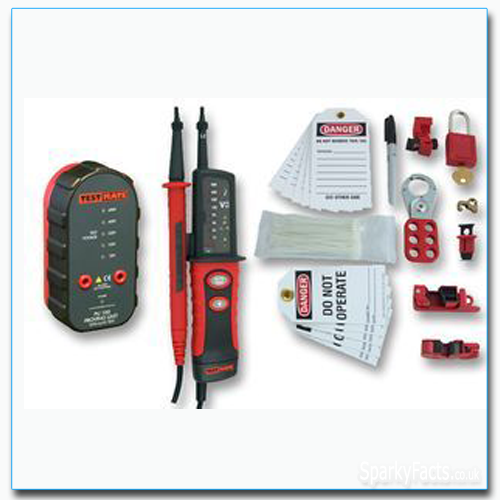
When it comes to the actual locks itself, it can be a difficult task to prepare yourself for every possible type of MCB`s and Main Switches out there. A solution would be in the standardisation of circuit breakers, but until that happens, we must try to use what we can get on the market.
What does the law say on Safe Isolation?
To comply with regulation 14 of the Electricity at Work Regulations, dead working should be the normal method of carrying out work on electrical equipment or circuits. Live working should only be carried out in particular circumstances, where it is unreasonable to work dead.
The EAWR states:
No person shall be engaged in any work activity on or so near any live conductor (other than one suitably covered with insulating material so as to prevent danger) that danger may arise unless -
(a) it is unreasonable in all the circumstances for it to be dead; and
(b) it is reasonable in all the circumstances for him to be at work on or near it while it is live; and
(c) suitable precautions (including where necessary the provision of suitable protective equipment) are taken to prevent injury.
It should be noted that all the three conditions must be met in order for work on or near live conductors to be carried out.
![]() When isolating the main source of energy it is also essential to isolate any secondary sources such as standby generators, uninterruptible power supplies (UPS) and microgenerators.
When isolating the main source of energy it is also essential to isolate any secondary sources such as standby generators, uninterruptible power supplies (UPS) and microgenerators.
![]() Do you need to fill in an Electrical Isolation Certificate? If so, you can get one here: Downloadable Electrical Isolation Certificate form
Do you need to fill in an Electrical Isolation Certificate? If so, you can get one here: Downloadable Electrical Isolation Certificate form
![]() The Best Practice Guide on Safe Isolation Procedures, produced by the Electrical Safety Council in association with leading industry bodies for the benefit of electrical contractors and installers is a downloadable booklet, freely available from the ESC website. It is an excellent resource for electricians and we highly recommend it. You can download the guide here.
The Best Practice Guide on Safe Isolation Procedures, produced by the Electrical Safety Council in association with leading industry bodies for the benefit of electrical contractors and installers is a downloadable booklet, freely available from the ESC website. It is an excellent resource for electricians and we highly recommend it. You can download the guide here.



